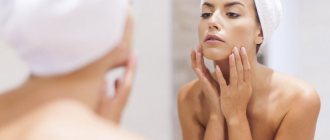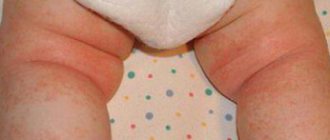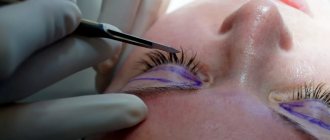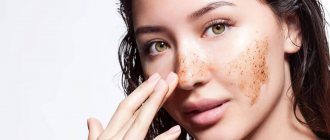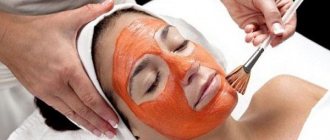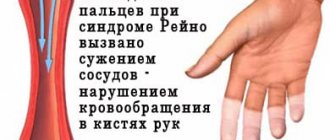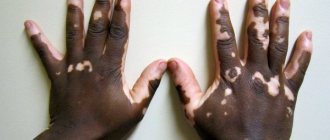Over the last decade, the problem of hand skin aesthetics has attracted increased attention from both patients and cosmetologists.
The skin of the hands is subject to the aggressive influence of a variety of external factors: UV irradiation, cold, water, household chemicals. In combination with internal aging factors, this leads to a fairly early appearance of involutive changes in this zone: pigmentation, thinning, wrinkling and dryness of the skin, tissue atrophy with visualization of veins and tendons [1, 2].
In 2006, R. Bains et al. conducted a survey of opinions, analyzed more than 300 clinical cases and came to the conclusion that a person’s age can be determined by looking at his hands. External signs of aging of the skin on the dorsum of the hand play an important role among the objective markers of general aging [3].
Correction of age-related changes in the skin of the hand requires the use of a comprehensive program [4].
The use of multidirectional techniques that provide replenishment of soft tissue volume (introduction of fillers, autologous fat), improvement of the visco-elastic properties of the skin (use of revitalizants), correction of signs of photodamage (hardware technologies, chemical peels, bleaching agents), allows us to obtain long-lasting results and patient satisfaction [ 3, 5, 6].
However, only a few authors have studied the essence of aging of the skin of the hands [4, 5, 7, 8].
To analyze the main signs of aging and choose the optimal rejuvenation method, it is necessary to determine which path the aging of a given delicate area takes [1]. Foreign specialists began to actively study the aging processes of the skin of the hands only in the last decade. In our country, this direction is also becoming increasingly popular.
The first qualitative study to determine chronological changes during aging of hand skin in individuals of phototypes I-III according to the Fitzpatrick classification was presented by Jakubietz et al. in 2008. In the course of studying age-related changes in the skin of the hands, the authors concluded that in both sexes there is a clear and predictable progression of wrinkling of the skin of the hands, that the aging process affects mainly the dorsal surface, and the skin of the palm is subject to only minor changes. Researchers have noted a strong positive correlation between visual signs of aging and age [4, 9].
An interesting fact is that it is the tortuosity of the veins on the dorsum of the hand that determines a person’s age to a greater extent than their number. Joint deformities are also a sign of aging, but this cannot be said with certainty about tendons, the visualization of which is not necessarily related to age. In addition, the authors noted that the dominant hand is characterized by pronounced venostasis and a square shape of the dorsum of the hand, which is observed in individuals of both sexes. According to a survey, women prefer the appearance of their non-dominant hand, while men prefer the appearance of their dominant hand [1, 4, 5].
Jakubietz et al. In the course of studies aimed at studying the mechanisms of age-related changes in this area, two types of aging of the hands were identified, namely external and internal. The external type of aging includes disorders in the epidermis and dermis, which is associated with photoaging and elastosis. The internal type includes atrophy of subcutaneous fat, changes in deeper structures with visualization of tendons and veins [4, 10].
Standardization of the assessment system in the analysis of age-related changes is a pressing topic for objectifying the results obtained after anti-aging therapy.
Most practitioners who evaluate the results of treatment rely on the analysis of photographs before and after the intervention, which is partly subjective. This principle is not suitable for the systematic accumulation of material in research work, the purpose of which is to analyze practical experience and develop preventive measures regarding the aging of soft tissues of the hand. To select a personalized approach with a prognostic outcome, it is necessary to use simple objective tools, such as visual scales [1, 9].
Validated hand aging scale
Generally accepted rating scales could become the basis for systematization and objectification of the results and effectiveness of the procedures performed. Therefore, it is important for researchers and practitioners to find an optimal and convenient tool for assessing aesthetic results. For this purpose, we analyzed and assessed the types of aging using existing scales [3, 4, 9].
Carruthers et al. in 2008, they proposed a 5-point visual aging scale (VAS) for an objective quantitative assessment of the degree of age-related changes in the hands, monitoring the results of rejuvenation procedures and for other scientific and practical purposes in the field of aesthetic medicine (Fig. 1)
Rice. 1. Validated 5-point Merz hand aging scale. [eleven]. VFS reflects the degree of loss of subcutaneous fat (SFA), the degree of visualization of veins and tendons. An undoubted advantage is the visibility of age-related changes, which are depicted on aesthetically attractive hands, even with the help of a photo editor. Nevertheless, this scale paves the way for effective and objective communication of information in clinical research [1].
The pigmentation and quality of the skin on the dorsum of the hand are not described, and body mass index (BMI) is not taken into account. Namely, this determines the path along which aging of the dorsal surface of the hand will develop. In our opinion, it is BMI and body type that can influence the main signs of aging in this area.
To analyze the signs of aging and present the chronology of aging of the hands, we studied complaints and clinical signs of age-related changes in patients who sought cosmetic help (Fig. 2).
Rice. 2. Frequency of complaints.
What processes occur in the skin when it loses elasticity?
Young skin is elastic and elastic. It does not deform under mechanical influence. If you squeeze or stretch it, it will retain its structure without damage (elasticity) and quickly return to its original shape (elasticity).
Why does this happen?
The dermis, its supporting layer, which is located between the epidermis and subcutaneous fat, is responsible for the firmness, elasticity, and strength of the skin. The dermis is a connective tissue that consists of collagen, elastin and hyaluronic acid.
These substances are the main components of youthful skin. Collagen and elastin are proteins that form a natural framework in the form of intertwined fibers. Hyaluronic acid creates a moist environment for them.
- Collagen fibers
work like the spring frame of a mattress: they return the tissue to its original shape after compression. - Elastin fibers
run diagonally at different angles and thus hold the dermis together, keeping its components from separating. - Hyaluronic acid
provides skin hydration, which is also necessary for smoothness and elasticity. It helps moisture retain in the skin in the form of a kind of gel. One molecule of hyaluronic acid is capable of attracting and holding up to 10 molecules of water in the intercellular space so that it does not all come out (through the pores of the skin we lose up to half a liter of liquid per day). In addition, hyaluronic acid protects against toxins.
But over the years, the structure of the dermis is disrupted. What leads to this?
- Blood circulation slows down,
the delivery of oxygen and nutrients to skin cells deteriorates, and their metabolism is disrupted. - Lymphatic circulation suffers,
excess fluid accumulates in the tissues of the face, it swells, and the skin becomes loose. - At some point, a hormonal factor comes into play:
the level of estrogen – “beauty hormones” – decreases. The number of fibroblasts - cells that participate in the synthesis of collagen, elastin and hyaluronic acid - directly depends on them.
All this is reflected on the skin:
- In the dermis, the renewal of collagen, elastin, and hyaluronic acid worsens (due to a reduction in the number of fibroblasts).
The quality of available fibers deteriorates. Elastin becomes fragile and breaks, collagen loses its properties.Result: the skin loses firmness, elasticity, strength, ability to retain moisture, and becomes defenseless against toxins.
- In addition to hyaluronic acid, the hydro-lipid mantle is responsible for skin moisture and its protection from the environment.
This is a film that covers the top layer of skin. It consists of the products of the activity of the sebaceous and sweat glands (located in the dermis). Over the years, this water-fat layer becomes thinner as the activity of the glands decreases. Result: dryness and dehydration. - Changes also occur in the deepest layer of the skin - subcutaneous fat (hypodermis).
It becomes thinner, while the area of the skin remains the same, that is, part of the integument turns out to be “extra.” Result: sagging skin. - In addition, the dermis is penetrated by blood and lymphatic vessels, nerve endings, sebaceous and sweat glands. The deterioration of their condition also affects the loss of skin elasticity.
Discussion
When a patient presents with an asthenic type of aging of the hands, it is recommended to carry out correction of the “skeletal hand”, taking into account the identified features. Autologous fat, fillers of various natures, and revitalizants are used to fill tissues [1, 9, 12, 13].
There is a wide variety of fillers based on HA of varying viscosity, which allows you to choose the most suitable drug adapted to age-related problems [9, 12-17]. In 2012-2014 In our own works (in double-blind and placebo-controlled studies to study the effectiveness of intradermal injections of revitalizants), we have shown the high clinical effectiveness of 3-fold administration of stabilized HA gel (20 mg/ml HA), increasing the elasticity and hydration of the skin on the back of the hands. The procedure for rejuvenating the skin of the hands is generally well tolerated, accompanied by mild pain, swelling and ecchymosis. The skin becomes significantly less rough, less wrinkled, and more hydrated. The clinical effect lasts up to 6 months with a gradual decrease by the 12th month (Fig. 5)
Rice. 5. Atrophic morphotype of aging. Photo of the hands of a 50-year-old patient: before the procedure, on the left is a drug based on stabilized HA with a concentration of 18 mg/ml. a - saline solution on the right; b - after 3 months. [13, 18].
For patients with a normotrophic type of hand aging, procedures are recommended aimed at improving the visco-elastic properties of the skin: fractional photothermolysis, microneedle radio wave lifting, biorevitalization with preparations of unstabilized HA and amino acid complexes, calcium hydroxyapatite. The accumulated almost 13-year experience of using revitalizants based on stabilized HA confirms the high safety profile and commitment of aesthetic medicine doctors to the method [7-11, 16, 17]. It has been proven that this group of drugs not only provides long-term tissue hydration, but also promotes the restructuring of the intercellular matrix of the dermis, which has a positive effect on the appearance and biomechanical properties of the skin [18-21].
When a patient presents with a hypertrophic type of hand aging, cosmetic correction is aimed at eliminating the identified signs of chrono- and photoaging, which are usually mild or moderate. Improving skin tone and elasticity through mesotherapy may be recommended. The emphasis of rejuvenation is on improving skin microrelief and correcting pigmentation. When correcting dry, wrinkled skin, preparations based on unstabilized HA (HA concentration 20 mg/ml) are recommended (Fig. 6)
Rice. 6. Normotrophic morphotype of aging. Correction of age-related changes with calcium hydroxyapatite. [1, 22-25].
Why does facial skin lose elasticity?
Skin elasticity decreases with age. The processes begin at the age of 25-30. During menopause (+/- 50 years), when the level of estrogen in a woman’s body drops, they accelerate. The skin becomes flabby and thin, becomes covered with wrinkles, and sags.
You can go through this quarter-century-long journey in different ways, when the prerequisites for skin aging already exist, but hormones have not yet delivered their verdict: “There is no reproductive function, there is no point in being attractive to a partner.”
How you go this path depends 99% on you, your lifestyle and habits. You can look 50 at 35, and vice versa. Choose what you like best.
What factors influence the loss of elasticity in facial skin?
- Poor posture
What is the connection between your posture and the elasticity of your facial skin? Very strong connections. Poor posture is a hunched back, hunched shoulders, a forward head, a tight and shortened neck. And this whole structure of chronically tense and stiff muscles prevents blood from flowing to the face, lymph from draining from it, and facial muscles from being in healthy tone.The skin becomes flabby, sagging on the cheeks and eyelids, a double chin forms, and the oval of the face floats down.
- Excess ultraviolet radiation
Passion for tanning (sun, solarium) leads to photoaging of the skin. It hits on several fronts at once, but the loss of skin elasticity is mainly affected by a blow to collagen and elastin. Ultraviolet light penetrates the dermis, promotes the formation of free radicals, which, in turn, destroy collagen and elastin fibers.According to one version, 70% of the skin ages not from age, but from exposure to sunlight. Their harmful effects accumulate in the body almost from childhood.
- Excessive physical and mental stress
Stress, overwork, nervous exhaustion, lack of sleep, physical overexertion - all these are prerequisites for a sagging face. - Unhealthy nutrition
Your skin is harmed by “food waste,” overeating, aggressive diets, lack of nutrients, fiber, vitamins, and minerals. - Fluid deficiency
In order for moisture to be retained in the dermis, you need not only a sufficient amount of high-quality hyaluronic acid, but also an uninterrupted source of water. The liquid enters the body in the form of a drink. If you do not drink enough clean water (less than 2 liters per day), the skin will become dry and flabby. - Smoking and alcohol
Nicotine, tar, and alcohol poison the skin with toxins, dry it out and deprive it of its protective properties. This also applies to cigarette smoke: passive smoking also steals youth from your face.The skin becomes thin and dry, like tissue paper. Elasticity is the ability to withstand mechanical stress. If you crumple such paper, it will never straighten itself out again.
- Lack of physical activity
Movement is not only life, but also youth. Lack of movement means slower blood circulation, worsening metabolism, poor cell regeneration and loss of skin elasticity. - Sharp fluctuations in body weight
Gained weight - the skin stretched, lost weight - the skin sagged. - Hormonal disorders
The “beauty hormone” - estrogen - determines the production of fibroblasts and the synthesis of collagen, elastin, and hyaluronic acid with their help. If the level of female hormones drops, the skin loses its “youthful” characteristics. Naturally, the amount of estrogen decreases after menopause, but hormonal disruptions can also occur during reproductive age. - Poor environment and aggressive natural factors
In addition to the sun, dirty and dry air, frost, wind, and dust also harm the skin. - Punitive cosmetology
Any external invasion - surgical methods, threads, Botox injections, contouring - is stressful for the skin. In addition, tissues wean themselves from working independently. When the effect of the procedure subsides, all the negative processes that were happening inside burst out. The skin becomes sluggish, flabby, thin, dry, wrinkles and creases multiply and worsen. - Improper cosmetic care
If the skin does not receive sufficient cleansing, moisturizing and nutrition, it ages prematurely. Also a challenge for her is the abuse of decorative cosmetics. - Pathologies
The condition of the skin can worsen due to disturbances in the functioning of the nervous, endocrine, cardiovascular systems, gastrointestinal tract, etc.
We have counted 13 main reasons for skin loss of elasticity. And this is the best tip for those who want to delay and minimize the aging of their face.
Contrary to numerology, we suggest you make our top 13 the basis for your work on yourself, so that all misfortunes and failures will bypass your skin.
Read below in which directions you should move.
Sebaceous glands
Disruption of the sebaceous glands plays an important role in the development of acne and pyoderma. Acne occurs when the sebaceous glands become blocked and infected. Obesity in young people often leads to acne. Disruption of the sebaceous glands is often associated with disruption of the production of certain hormones, as well as long-term use of hormonal medications.
Acne
Obese people have increased levels of androgens, growth hormone, and insulin-like growth factors. This is a risk factor for acne.
Prevention of loss of facial skin elasticity
Do you want to prolong the youth of your face?
- The first piece of advice is to watch your posture.
How do you sit at the computer: do you slouch, pull your head forward, lean your elbows to one side?Do you like to read while lying down?
Do you sleep on a soft mattress and high pillows, on one side or face down?
How much time do you spend on gadgets, hunched over and pressing your chin into your chest?
All this is harmful to your back, shoulders, neck and, as a result, to the elasticity of your facial skin.
- Do not overuse sunbathing and solariums.
Limit your time in direct sunlight. Use creams with UV filters, sunglasses, and wear hats with large brims. - Move a lot
An adult needs 30-60 minutes of moderate-intensity activity every day. Medium is one in which the heart rate increases, but can be maintained for more than 10 minutes. The most accessible option for such a load is walking (at least 7,000 steps per day).We also run, jump, swim, ride a bike, and play sports games.
All this is necessary to ensure that the muscles are in healthy tone, blood and lymph flow through the vessels without delay, and no excess fat or swelling puts pressure on the musculoskeletal system and does not pull the facial tissues down.
- Follow food and drinking regimes
Eliminate “food waste” from your diet, don’t overeat, don’t starve, ensure that you get all the necessary nutrients, fiber, vitamins, and microelements from your food.For youthful and elastic skin, it is useful to consume foods containing silicon, iron, selenium, zinc and the entire list of vitamins from A to P.
Drink at least 2 liters of clean water per day - this will create the basis for your skin and muscles to be elastic and hydrated.
By eating right, you will also eliminate weight fluctuations that are harmful to skin elasticity.
- Give up bad habits
Do not smoke or abuse alcohol - do not allow toxic substances into your body that lead to dehydration, thinning of the skin, loss of turgor and elasticity.
And some tips for caring for your skin.
What useful habits should you develop to keep your skin elastic for as long as possible:
- Take care of your face with cosmetics twice a day.
Morning and evening, cleanse, moisturize and nourish.To cleanse, use mild products that will not dry out your skin. The ideal option is to wipe your face with a cotton pad soaked in hydrosol (plant distillate).
To moisturize and nourish, choose natural products: oils, balms, squalane. They contain many useful, anti-aging components.
Choose hydrolates, oils, squalanes and balms from the Beauty365 brand at www.beauty365.ru. Find a detailed guide to the means below.
- Do gymnastics and self-massage of the face
Exercises and self-massage can be done at any age: both teenagers and women after menopause. If you are over 30, they should become a mandatory part of your beauty ritual.This is the basis for natural rejuvenation, a direct effect on the skin, muscles, blood vessels, lymph without injections or scalpels. The causes of skin aging are eliminated from the inside.
Make it a rule to knead your face along massage lines for 10-15 minutes a day, reduce swelling and perform simple exercises. At a young age, it is enough to do this 2 times a week.
If the problem of loss of skin elasticity has already become apparent, classes should be daily, the course should be at least three weeks.
- Perform self-massage with a dry brush (drybrushing) and vacuum cups
The jar and brush improve blood circulation, remove lymph, and tighten the skin. The brush also removes dead scales, which promotes skin renewal.It is better to alternate jars and brush. It is enough to perform the procedure 1-2 times a week.
Choose the Beauty365 Dry Facial Brush, which is made with boar bristles, and Beauty365 glass jars. They can be found at www.beauty365.ru.
How to perform the procedures?
Vacuum self-massage with cups.
Apply squalane or oil to your face for easy sliding of the cans (choose suitable Beauty365 products at www.beauty365.ru) and repeat the technique from the video:
Dry massage with a brush.
Rub clean and dry facial skin along the massage lines (indicated on the packaging of the Beauty365 dry facial brush). After the procedure, nourish the skin with cream, oil or squalane.
How to restore elasticity to facial skin through surgery
Cosmetologists and plastic surgeons have two main solutions to any problem of facial aging: pricking and cutting.
Also with skin elasticity. How can I get it back? The most effective salon methods are considered to be radical methods - surgical ones.
In fact, they are dangerous to health, destructive to the skin and speed up its withering. Let's figure out why you shouldn't cut the skin.
Plastic surgeons offer to tighten facial skin in two ways: using surgical lifting and thread lifting.
What is the essence of the procedures?
Surgical lift:
excess skin is cut off, the remainder is stretched and sutured.
Thread lifting:
punctures are made in the skin, and artificial threads with notches are inserted into the soft tissues, which dissolve within a year. The effect is achieved due to tissue injury by threads and their subsequent scarring. In place of the threads, a pathological, fibrous frame is formed - “wrong” collagen, overgrown and damaged.
It doesn’t take a rocket scientist to understand that neither procedure improves the structure of the skin. On the contrary, they only create conditions for its accelerated aging, thinning, loss of firmness and elasticity. Self-regulation mechanisms are disrupted, and all processes deteriorate: from nourishing the cells of the dermis to renewing its “building material”.
Like any surgical intervention, skin tightening and thread lifting are traumatic operations. Complications are possible, including tissue and vessel necrosis, damage to the facial nerve, skin loss, blood clot formation, etc.
In addition to surgery, the following are also offered for face lifting:
- injection techniques: contour plastic surgery (fillers), mesotherapy, plasma lifting,
- hardware techniques: laser, radio waves, electric currents, light, cold, etc.
None of them solve the problem of loss of elasticity. At best, it creates a temporary effect, but even this does not always happen. Most likely, the skin condition will only worsen.
What to do then?
Irritated skin
Irritation can occur in all skin types and manifests itself in different ways from time to time. There are many reasons for this: temperature changes, exposure to the sun, food, diet, touch, bacteria and much more.
If one or more of the following descriptions apply to you, this is a sign that your skin is currently irritated:
- The skin suddenly turns red;
- Suddenly becomes warm;
- There is itching, tingling or burning;
- Suddenly a lot of pimples appear - even where there are usually none.
Is it possible to restore elasticity to facial skin?
Is your face already starting to look like a slowly deflating balloon? Is your skin loose and uneven? Are the contours blurry? Does gravity pull flaccid and stretched tissue down?
Flabby skin is not a death sentence. You can increase the elasticity and tighten the skin of your face. Moreover, only self-massage and gymnastics techniques will be effective. Only they will eliminate the causes of skin aging and launch the mechanisms of natural rejuvenation. They are safe, and the result will be visible after 2-3 weeks of regular exercise.
It's never too late to start doing exercises. Natural rejuvenation techniques can improve skin elasticity at any age.
The sooner you start taking care of your face, the easier it will be to restore elasticity to your skin and prolong youth.
The result will be even after menopause, when the problem has already been fixed at the hormonal level. You can tighten sagging skin, make the oval of your face clear, get rid of a double chin, bulldog cheeks, ptosis (drooping) of the upper eyelids.
Material and methods
To identify and describe various morphotypes of aging, we developed a questionnaire consisting of four blocks of questions that revealed information about heredity, morphometric data, clinical signs of aging, self-assessment of the condition of the skin and soft tissues of the hands. A 10-point rating system was used, in which the significance of a feature was determined from 0 to 10 (with explanations). The questionnaire was filled out by the patient and an independent medical expert. Filling out the questionnaire took about 5 minutes.
We also collected information about hand dominance at work, profession, preference for using the right or left hand, calculated BMI, and determined the morphotype of aging in interviewed individuals over the age of 40.
At the Vallex Med clinic, from November 2014 to November 2016, a study was conducted in which 310 healthy women of the Slavic type who were cosmetology patients took part. Questionnaires and questionnaires for the subjects were approved by the ethics committee of the Vallex Med clinic.
Inclusion criteria: healthy women aged 25-65 years of Slavic type, I-III phototype, with a BMI of 18-30 kg/m2.
Exclusion criteria: skin, rheumatic diseases, gout, deforming arthritis, various types of injuries to the hands (burns, fractures, scars in the hand area, neurovascular disorders), previously performed cosmetic procedures in the area of the back of the hands.
Standard photography of both hands was performed in oblique radial and dorsal projections in full size, as well as from above during flexion, in the same room with constant temperature and lighting, with the same camera. The photographs were assessed by the same expert (cosmetologist) using the merz scale.
The photographs were assessed and the dominant signs of aging for each participant were identified.
Subjects were weighed and height measured to determine BMI. Next, we measured the length and width of the brush; wrist circumference. Information was collected about the dominant hand, the time of appearance of signs of aging in the area of the back of the hands, and the hereditary nature of skin aging in this area.
At the next stage, the severity of contouring of veins and tendons, loss of volume of the pancreas, and pigmentation were assessed.
The most standard options for aging brushes were selected, and trends in brush aging were determined from photographs.
Test to determine wrinkles and sagging.
The patient's skin was gathered into a fold in the center of the back of the hand (above the area of the third finger) in the longitudinal and transverse direction (pinch test). They raised it above the level of the back of the hands and measured the time during which the skin returned to its original position, and also measured its thickness using a caliper with an accuracy of 0.2 mm.
Review of products to improve facial skin tone
In order not to spoil the results of self-massage and gymnastics, you also need to reconsider your lifestyle, habits, and cosmetic care.
Basic recommendations can be found above, in the chapter “Prevention of loss of elasticity in facial skin.”
A few more tips on choosing cosmetics.
- Cleansing
You should cleanse your facial skin in the morning and evening. From dirt, excess fat, cosmetics. The product should be soft, and ideally also moisturize.Hydrolates – plant distillates – are perfect for this. They remove everything unnecessary from the face well and at the same time provide optimal water balance. You can wipe your face with cotton pads soaked in hydrolate several times a day and not be afraid of drying it out. Such products are suitable not only for cleansing, but also for toning and moisturizing the skin.
Depending on your skin type, you can choose mint, lavender or sage hydrosol from Beauty365 at www.beauty365.ru.
- Anti-aging care
To increase skin elasticity, you need anti-aging cosmetics. A rich cocktail of vitamins and fatty acids, beneficial for youth, contain natural products: oils, squalane, balms.For morning care it is better to use squalane. These are light oils that absorb quickly and leave no residue.
Before going to bed, you can afford a more powerful product: oil or balm.
In the Beauty365 assortment you will find squalane (sugar cane), coconut oil, camellia sasanqua oil, Verbena hemp balm (oil and oil extracts of hemp, coconut, shea butter, pistachio, calendula, carrot seeds).
All these products have a rejuvenating effect. They promote moisture retention, nourish, protect, fight free radicals, and activate cell regeneration. In combination with exercises, they increase skin elasticity.
Different Beauty365 oils have their own nuances. For example, Beauty365 coconut oil is better suited for those with dry and sensitive skin prone to irritation and inflammation, and in case of oily skin it should be used with caution. Beauty365 camellia sasanqua oil also works with skin color: it fights age spots and helps prevent the appearance of freckles during the season.
Go to www.beauty365.ru, study the description of Beauty365 products and choose “your” product.
At the same time, you can purchase a Beauty365 dry face brush and Beauty365 glass jars. The most effective way to use squalane and oils is before a vacuum massage or after a dry one.
Oily skin
Oily skin is one of the most common skin types, and also one of the most challenging, as it often causes a number of other problems. It is no coincidence that the words “greasy and dirty” are often used in combination. Although oily skin is not necessarily prone to acne, this type is at higher risk of developing acne. But according to research, oily skin prevents the appearance of wrinkles.
Features of oily skin: shiny, with large pores and fine wrinkles. May have a tendency to comedones (blackheads) and pimples. The skin has a rougher texture and an oily surface. You often feel the urge to wash your face, especially in the afternoon when the most oil is released.
Oily skin with enlarged and visible pores
Acne on oily skin
If you can cross off a few items on this list, it means you have oily skin:
- The face appears oily, both with and without makeup. Fat is felt when touched. Excess fat can occur on the face, neck, shoulders and back.
- Skin tends to become shiny throughout the day. The shine appears relatively quickly even after cleansing.
- Enlarged and visible pores around the nose, forehead and cheeks;
- Blackheads and pimples appear and can cover the entire face;
- The skin does not like oily cream;
- Makeup tends to slide off my skin quickly and it's hard to find a solid base underneath;
- Fewer fine lines and wrinkles than people of similar age.
Folk remedies for facial skin tone
You can make your own face mask. The simplest and cheapest products that any housewife can find have a beneficial effect on the skin.
Open the kitchen cabinets and take out oatmeal, rice, gelatin, rye bread, potatoes, vegetable oils, honey. Take eggs, lemon, cucumbers, dill, and milk from the refrigerator.
Masks made from these ingredients will help improve skin elasticity. Apply them to your face twice a week, keep for 20-30 minutes and rinse with warm water.
Folk recipes for masks against sagging skin:
- Gelatin mask
½ tbsp. spoons of gelatin (dissolve in 3 tablespoons of hot water and cool) + 5 drops of lemon juice + 1 egg yolk. - Potato mask
1 potato, boiled in its jacket + 1 teaspoon of sour cream + 1 teaspoon of vegetable oil.Grind and mix, apply the warm mixture to your face and cover with a towel.
- Bread mask
1 piece of rye bread + 1/3 glass of warm milk + 1 teaspoon of honey. - Oatmeal mask
2 tbsp. spoons of oatmeal poured with hot milk + 1 teaspoon of olive oil + 1 tbsp. spoon of sour cream. - Lemon mask
5 drops of lemon juice + 1 tbsp. spoon of olive oil + 1 egg yolk.
Skin manifestations in obese and overweight people
- Acanthosis nigricans.
This is a fairly common skin problem in obesity. Manifestations of acanthosis nigricans are velvety, symmetrical dark spots on the back of the neck and face, in the pits of the arms, groin, elbows, and joints. The pathology is associated with insulin resistance. - Follicular keratosis .
It is the formation of papules or growths on the outer surface of the hands and face. - Hyperandrogenism and hirsutism.
The disease is typical for women. It is expressed by increased pathological hair growth on the face (a mustache and beard appear) and on the body - chest, back, legs. The condition is associated with high levels of male hormones - androgens. These symptoms are also common in polycystic ovary syndrome and insulin resistance. - Stretch marks .
Stretch marks are long white stripes on the skin that form in areas of greatest tension - the chest, buttocks, abdomen and thighs. At first they are red, then they turn purple, and after a while they turn white. - Adiposis dolorosa.
This is a rare pathological condition. It is accompanied by the formation of multiple painful fatty tumors on the body - subcutaneous lipomas. Lipomas are quite painful and increase in size over time. The condition is often observed in obese postmenopausal women.
Stretch marks Follicular keratosis
